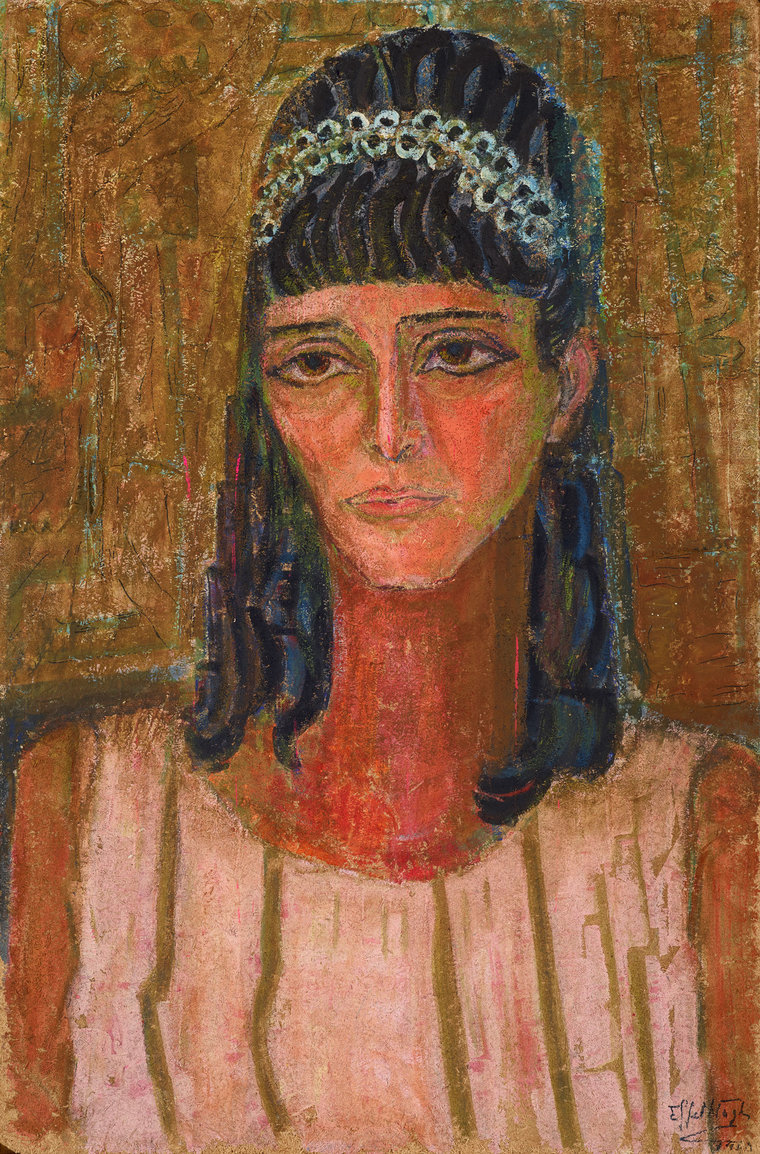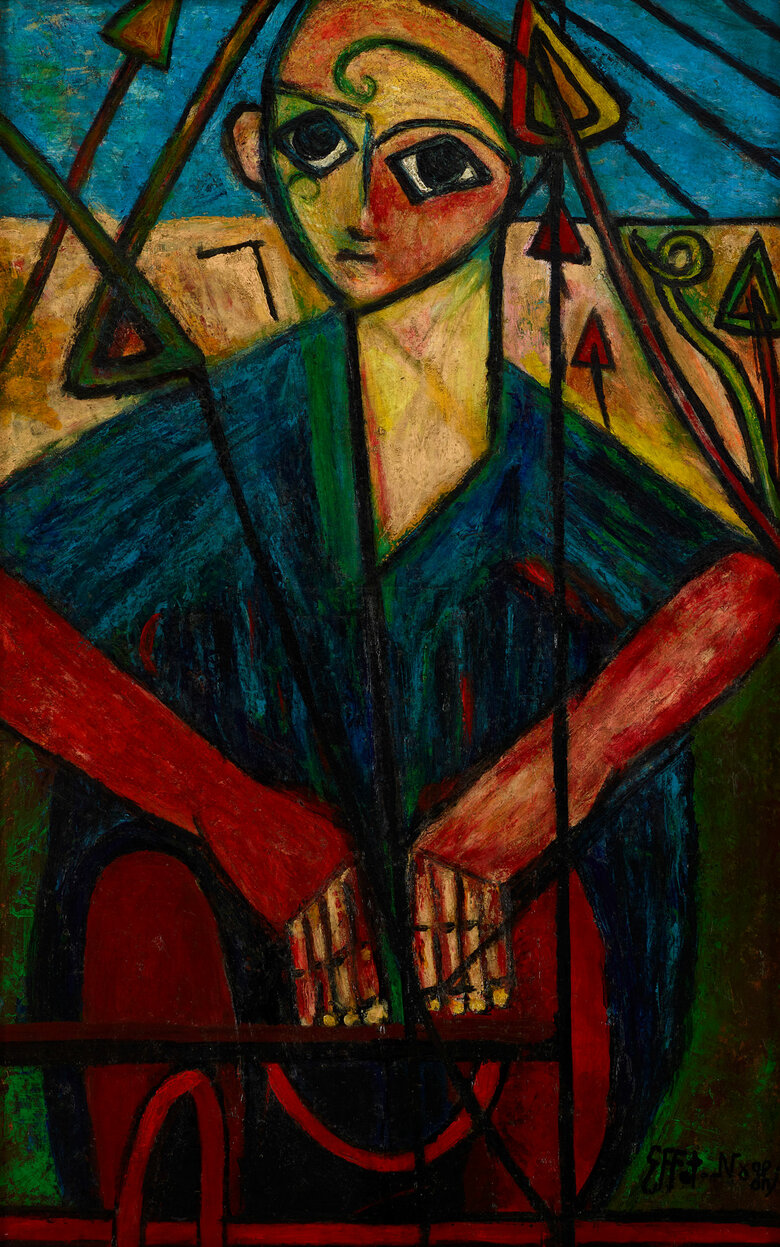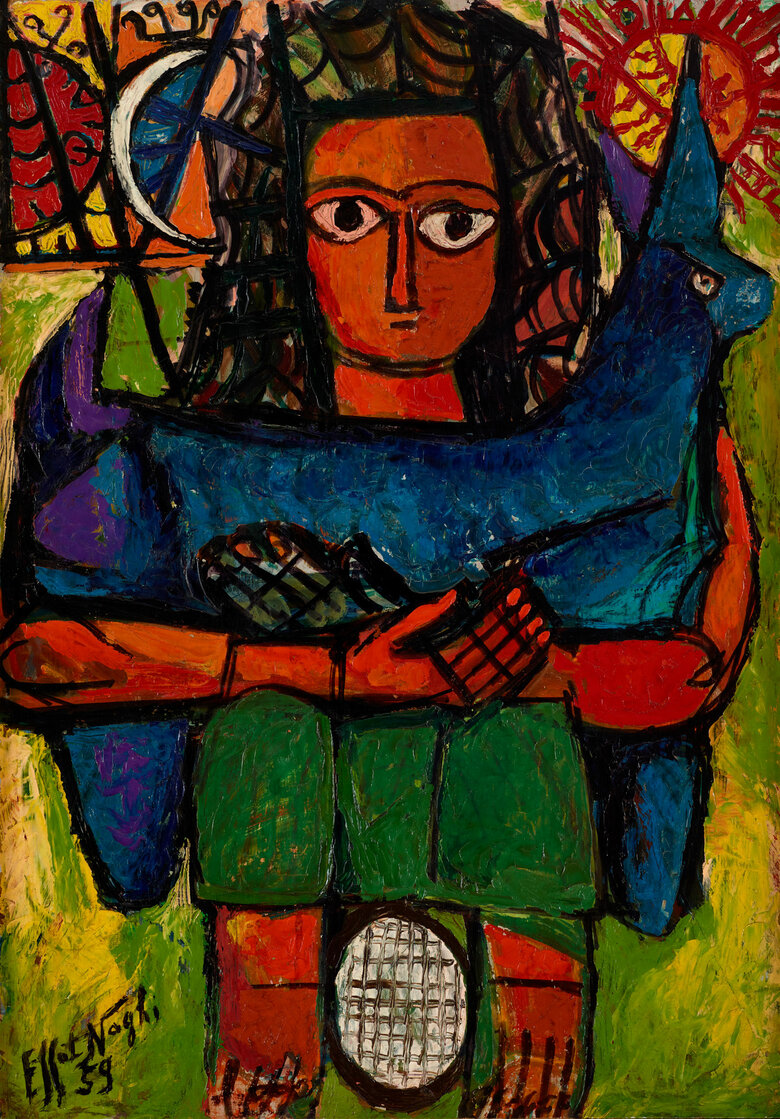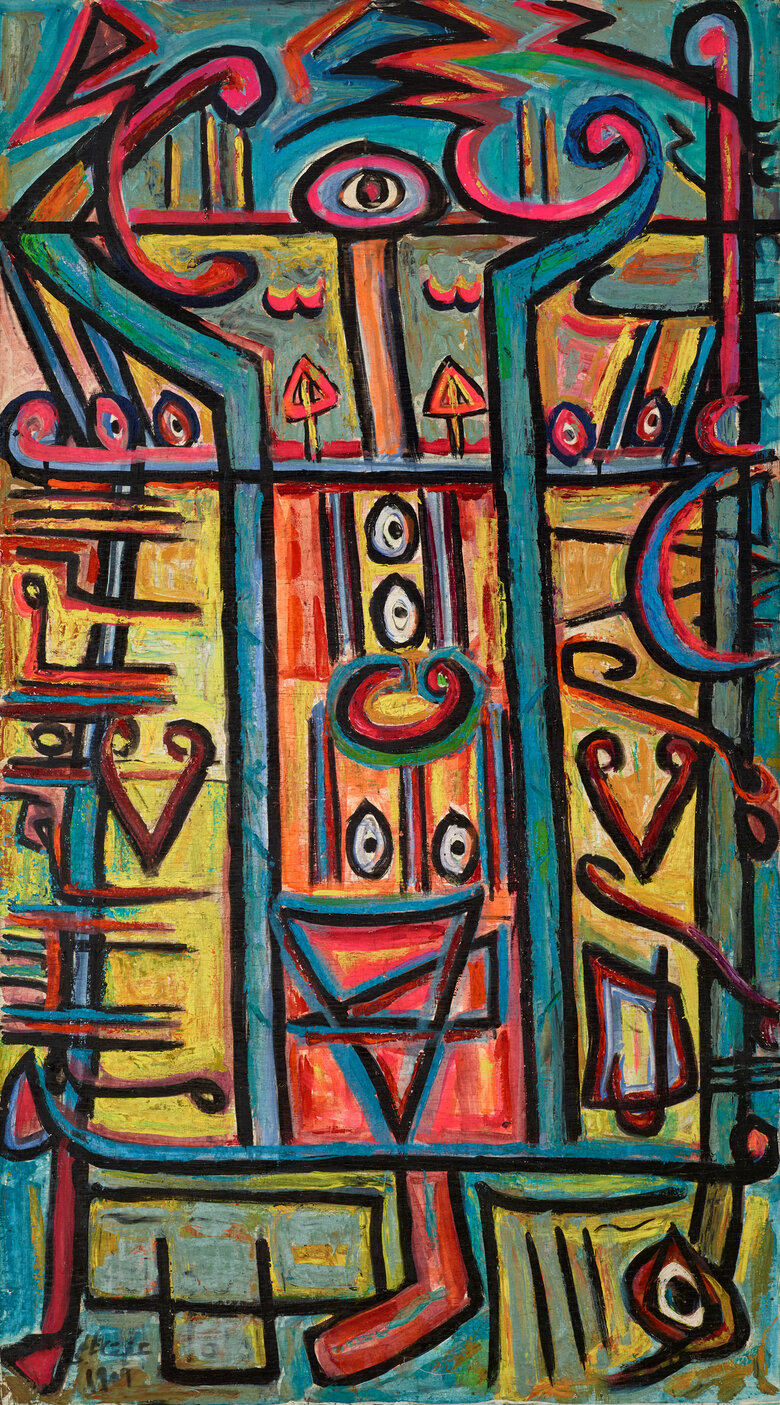Egyptian artist Effat Naghi’s work Untitled, 1960, reflects the ways in which Naghi reinterpreted ancient Egyptian visual arts traditions into modernist formats. The painting is a portrait of a bust of a woman, potentially a self-portrait, painted on a chipboard in the style of ancient Fayum portraits: realistic funerary paintings from Roman Egypt created between the 1st and 3rd centuries CE found in the Fayum basin and surrounding areas. They were executed on wooden panels using beeswax mixed with vegetable color to create the naturalistic hues – a process that had to be done quickly before the wax hardened, and which produced a textured result. Fayum portraits often depicted faces of the deceased with striking realism, capturing individual features and expressions, and were a means of commemorating the dead by placing these portraits over mummified bodies.
Naghi preserves the intensity of her classical references by emphasizing the subject’s facial features – particularly the stylized, enlarged eyes – and by rendering the elaborate hairstyle with thick, expressive brushwork that highlights its texture and form. The ornamental headband, composed of looping motifs, and the softly draped attire further contribute to the portrait’s refined presence. The background is similarly flat and featureless. However, here Naghi seems to have added symbols and writings in black ink which evoke magic words and verses that the artist often integrated in her works. This accentuates the sense of texture in the piece while also possibly referencing the hardened wax of many of the original ancient Fayum paintings.
Untitled, 1960, showcases Naghi’s life-long fascination with and celebration of her Egyptian cultural heritage, and how she worked to not only revive its relevance but to also modernize it. She does so by drawing upon the visual language of the classical portraits – the frontal poses, direct gaze, and distinct features – while also incorporating modernist techniques such as expressive brushstrokes and flattened spatial depth, which make this painting more stylized compared to the lifelike realism of classical Fayum portraits. The result is a distinctly Egyptian artwork that carries with it the traditions of ancient Egypt and the innovation that marked this unique era of Egyptian modernism.
This work was created in 1960,during a period where Naghi immersed herself in the vast collection of historical texts at the Great Library of Cairo. She was captivated by works on magical rites, as well as astrological diagrams, natural history books, and artifacts such as ancient clothing, war remnants, and terracotta fragments from the Greco-Roman, Coptic, and Islamic periods. This deep engagement with Egypt's cultural heritage profoundly influenced Naghi's artistic evolution, with these elements becoming central to her creative expression. Naghi’s privileged background as someone from a wealthy aristocratic family gave her the space to pursue her education and her passions with very few limitations. It allowed her to develop her artistic practice, find her voice, and in the process serve her community by documenting and reinterpreting her cultural heritage.
Signed and dated in English on the lower left front.










